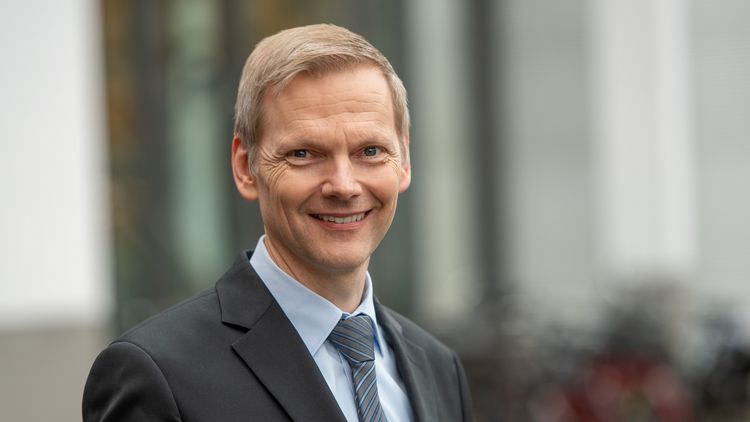For many types of cancer, the incidence rate is decreasing – but according to a new study some regions are benefiting considerably more from this trend than others. Health economist Lars Schwettmann explains the connections.
You were a co-author in a study investigating the connection between the socioeconomic situation and the cancer incidence rates in a region. What did you find out?
Although incidence rates are decreasing across Germany, there are marked differences between the various regions. We observed that the decrease in incidence rates is less pronounced in “deprived” regions, by which we mean areas where the conditions for a healthy lifestyle are less favourable due to a lack of material and social resources. The difference is apparent in the total cancer incidence rate, but particularly regarding diagnoses of colorectal cancer and lung cancer in men. On balance, the social gradient has become even wider, meaning that the correlation between socioeconomic situation and cancer risk has actually increased: while the cancer incidence rate among men was already seven percent higher in the most deprived regions than in the least deprived areas in 2007, the cancer risk gap had already increased to 23 percent by 2018, the most recent year for which we analysed data. For women, the gap increased from seven to 20 percent over the same period.
What factors determine the socioeconomic strength or weakness of a region in your classification?
We assigned each of the districts and independent cities in the area studied to one of five categories indicating different levels of deprivation. For this classification we used an index which was developed especially for Germany by my colleague Werner Maier and has already been used in many studies. The index takes all kinds of information about a region into account, including the financial situation, the security situation and education and employment levels.
And how can you assess things like the security situation in a certain region?
We use publicly accessible statistics, which are available for all the districts and independent cities included in the study. This has the advantage that other researchers can understand our approach and, if in doubt, check the figures themselves. To assess security deprivation, for example, we analyse data on criminal offences and traffic accidents, among other things. We use voter turnout in federal elections and the gap between the number of people moving into a region and those moving out to measure the lack of social resources – in other words, lacking political participation and attractiveness of a region. In addition, statistics on per capita income, unemployment, the percentage of unskilled workers, per capita local tax revenues, transportation and industrial and commercial space are included in the index, with different weightings.
None of these factors make people ill directly. How could they result in an increased risk of cancer in certain regions?
The level of deprivation in a region gives an indication of how healthy the environment there is. It may come as a surprise that general infrastructure and medical care – factors such as how many doctors there are per inhabitants – seem to have little bearing on the cancer risk. Instead, social, individual factors such as the unemployment rate or the percentage of social welfare recipients and school dropouts play an important role. But lifestyle-related cancer risk factors such as tobacco and alcohol consumption, obesity, lack of exercise and an unhealthy diet are closely linked to this. If a municipality has high tax revenues, it can build cycle paths and green spaces. Well-equipped schools can offer prevention programmes, and people living in less deprived areas often know more about healthy living. In areas with abundant social resources you find more health-promoting structures such as sports clubs offering physical activity. By contrast, in regions with high deprivation levels the lack of healthy living conditions manifests itself in aspects such as alcohol and tobacco consumption being more socially acceptable, or unhealthy eating habits being fuelled by a profusion of fast food outlets. There are many conceivable correlations/links.
So ultimately, is it mainly a question of how much money a municipality can invest in urban planning?
Not directly. We found that per capita income is a relevant variable, but municipal income doesn’t seem to have much influence. Other factors are more important: in places with high unemployment, poor environmental conditions and limited social services, the number of new cancer cases was often higher or decreased less significantly. In the case of lung cancer in women, where incidence rates are unfortunately rising against the general trend, the lack of a school-leaving qualification has also been shown to be a relevant factor.
What political and social conclusions can be drawn from this?
We had a long discussion about this. The clearest conclusion from the study is that measures aimed at reducing new cases don’t reach everyone equally. This means that we need regionally adapted public health measures; initiatives aimed at raising awareness about the health risks of smoking, alcohol, obesity, poor diet and lack of exercise that also reach people living in regions where there are fewer resources for healthy living than elsewhere.
Could you give more examples of such measures?
One possibility is standardised cancer screening with personal invitations and regular reminders, as is standard practice in other countries. Easily accessible services and mobile services could have a positive effect, as could involving family doctors more in making recommendations regarding healthy living. Financial incentives are another possibility.
That sounds like a major investment.
For us economists, the focus is often efficiency – in other words, the question of where an extra euro will bring the most benefit. This needn’t stand in contradiction to questions of fairness. Investing in areas where there are deficits can often achieve more than investing in regions where the conditions for a healthy lifestyle are already good. On the whole, however, I’m convinced that creating equal conditions for a healthy lifestyle will benefit everyone in the long run, and that should be our goal. We are currently working with Werner Maier on an update of the GIMD and will continue to use this instrument here in Oldenburg to analyse socioeconomic inequalities in healthcare.
Interview: Sonja Niemann



